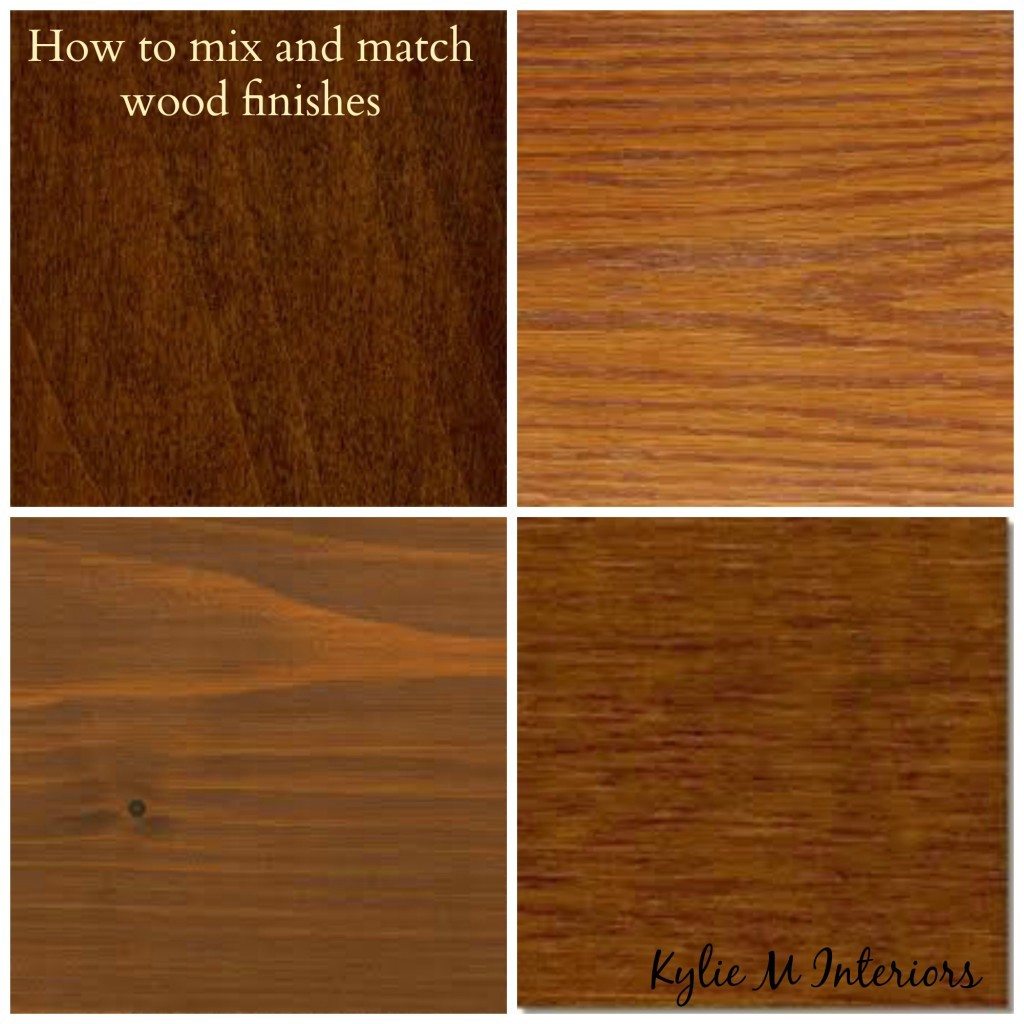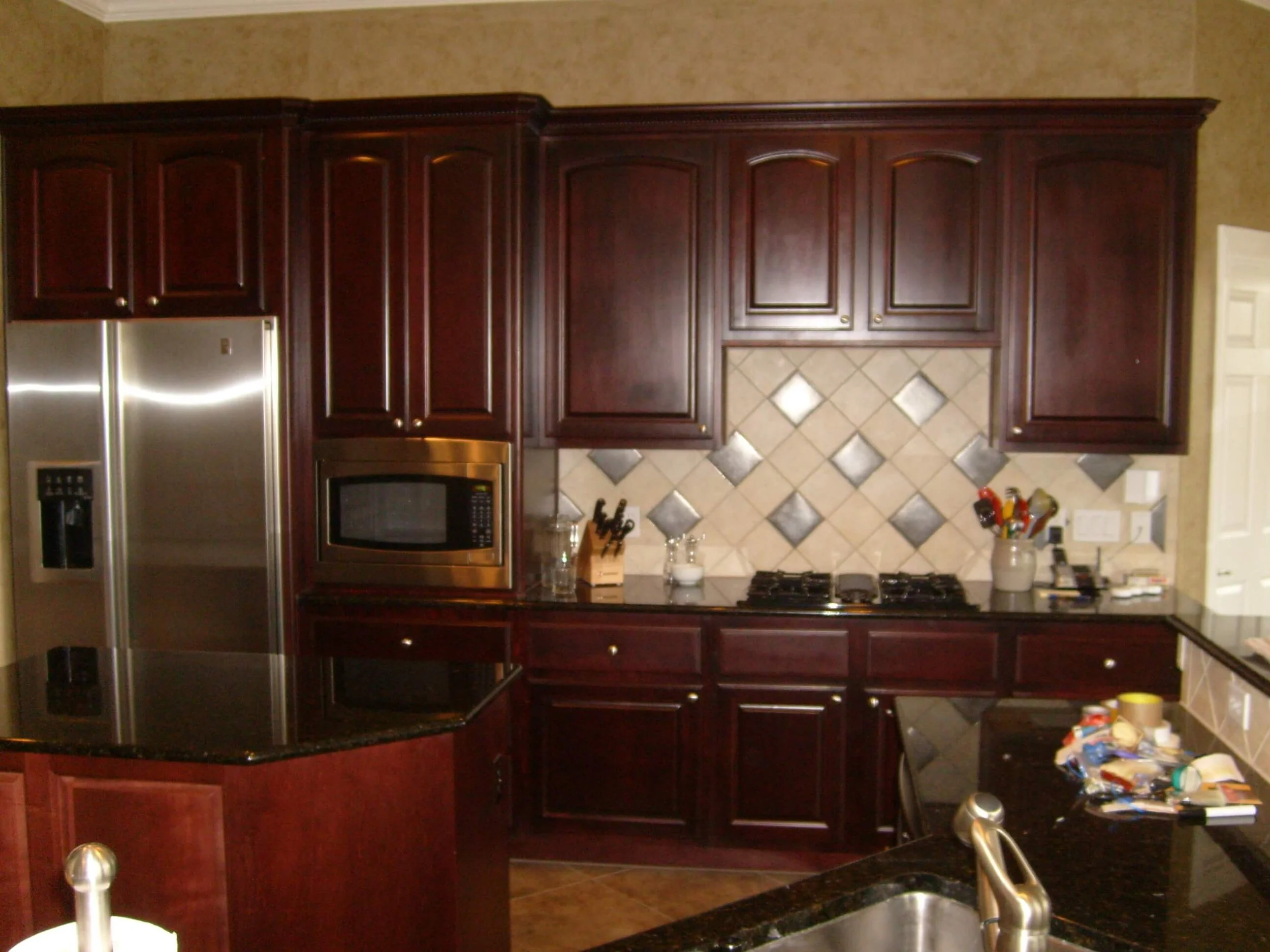Understanding Matching Cabinet Stain: Matching Stain On Cabinets

Choosing the right stain for your cabinets is crucial, as it significantly impacts their overall appearance and the feel of your kitchen or bathroom. The stain you select can enhance the natural beauty of the wood, create a dramatic contrast, or even completely transform the look of your cabinets.
Factors Affecting Stain Color and Appearance, Matching stain on cabinets
The color and appearance of a stain can vary depending on several factors, including the type of wood, the application method, and the finish applied over the stain.
- Wood Species: Different wood species have unique grain patterns, densities, and porosities, which affect how they absorb and react to stain. For instance, maple is known for its tight grain and tends to accept stain evenly, resulting in a consistent color. On the other hand, oak has a more open grain, which can lead to variations in color and a more pronounced grain pattern.
- Stain Type: There are various types of stains, including oil-based, water-based, and gel stains. Each type has its own characteristics, affecting the color, drying time, and finish. For example, oil-based stains penetrate deeper into the wood, producing richer colors and a more traditional look. Water-based stains are faster drying and have less odor but may not penetrate as deeply, resulting in lighter colors. Gel stains are thicker and offer better coverage, making them ideal for covering knots or imperfections.
- Application Method: The way you apply the stain also influences its appearance. Using a brush can leave brushstrokes, while a rag or sponge can create a more even finish.
- Finish: The finish applied over the stain can affect the final color and sheen. Polyurethane, lacquer, and wax are common finishes that can enhance the beauty of the stain while providing protection.
Examples of Cabinet Stain Colors and Wood Species
Here are some common cabinet stain colors and the wood species they complement:
| Stain Color | Wood Species | Description |
|---|---|---|
| Natural | Maple, Cherry, Pine | Enhances the natural beauty of the wood, showcasing its grain pattern and color variations. |
| Light Walnut | Oak, Alder, Birch | Creates a warm, inviting look with a subtle hint of brown. |
| Medium Walnut | Oak, Cherry, Mahogany | Provides a rich, classic look with a deeper brown tone. |
| Dark Walnut | Oak, Walnut, Mahogany | Offers a dramatic, sophisticated look with a dark brown to black hue. |
| Espresso | Maple, Cherry, Walnut | Creates a bold, modern look with a deep, rich brown color. |
Matching Stain Techniques

Matching existing cabinet stain can be a real head-scratcher, especially if you’re dealing with older cabinets or those that have been refinished multiple times. But fret not, my friend, there are some tried and true techniques to help you get that perfect match.
Color Matching Tools and Techniques
Color matching tools and techniques are your best friends when it comes to matching existing cabinet stain. They help you identify the exact color of your existing stain, making it easier to find a match.
- Color Matching Apps: There are several color matching apps available for smartphones and tablets. These apps use your phone’s camera to capture the color of your existing stain and then suggest matching paint or stain colors. Some popular apps include ColorSnap by Sherwin-Williams and the PPG Paints ColorSmart app.
- Color Matching Tools: Hardware stores and paint shops offer color matching tools that use a spectrophotometer to analyze the color of your existing stain and provide a precise match. This is a more accurate method than using a color matching app, but it can be more expensive.
- Color Swatches: If you’re working with a smaller area, you can use color swatches to compare against your existing stain. Keep in mind that lighting can affect the way colors appear, so it’s best to compare swatches in natural light.
Applying Stain to New Cabinets
Once you’ve found a matching stain, it’s time to apply it to your new cabinets. Here’s a step-by-step guide to ensure a smooth and consistent finish:
- Prepare the Cabinets: Start by cleaning your cabinets with a mild detergent and water to remove any dirt or grime. Sand the cabinets with fine-grit sandpaper to create a smooth surface for the stain to adhere to.
- Apply the Stain: Use a clean cloth or brush to apply the stain evenly to the cabinets. Work in the direction of the wood grain. For a more even finish, apply thin coats of stain, allowing each coat to dry completely before applying the next.
- Wipe Off Excess Stain: After applying the stain, wipe off any excess with a clean cloth. The amount of time you leave the stain on will determine the depth of the color. The longer you leave it on, the darker the color will be.
- Apply a Polyurethane Finish: Once the stain has dried completely, apply a polyurethane finish to protect the wood and enhance the color. Polyurethane comes in different finishes, such as gloss, semi-gloss, and satin. Choose the finish that best suits your style and needs.
Testing Stain Samples
It’s crucial to test your stain samples on scrap wood before applying them to your cabinets. This way, you can ensure that the color matches your existing cabinets and that you’re happy with the finish. It’s better to be safe than sorry, right?
Troubleshooting Stain Matching Issues
.jpg?format=2500w)
It’s totally normal to encounter some hiccups when trying to match cabinet stain, especially if you’re a DIY enthusiast. You might find yourself staring at a cabinet with an uneven color or noticing inconsistencies between different parts. Don’t fret, though! We’ll break down some common problems and give you the tools to tackle them.
Identifying Common Problems
When trying to match cabinet stain, you might run into some common issues that can leave you scratching your head. Here are a few to watch out for:
* Uneven Color: This happens when the stain is applied unevenly, resulting in patches of darker or lighter shades. This can be caused by applying too much stain in one area, not distributing it evenly, or leaving it on for too long.
* Color Variations: Sometimes, even when you use the same stain, you might notice slight variations in color between different pieces of wood. This can be due to differences in wood grain, density, or even the presence of knots.
* Inconsistent Finish: If you’re not careful, you might end up with a finish that’s not smooth and even. This can be caused by using too much stain, applying it too thickly, or not sanding properly between coats.
* Color Mismatch: Sometimes, even if you think you’ve chosen the right stain, you might end up with a color that doesn’t quite match the existing cabinets. This can be due to differences in the wood itself, the lighting conditions, or even the age of the existing stain.
Troubleshooting Tips for Resolving Specific Issues
You’ve got the tools, now it’s time to troubleshoot! Here’s a table that lays out some common problems and their solutions:
| Issue | Troubleshooting Tip |
|---|---|
| Uneven Color | Sand the uneven areas lightly to remove excess stain and create a more even surface. Reapply stain evenly and let it dry completely. |
| Color Variations | Use a wood conditioner before applying stain to help even out the color. Apply stain in thin, even coats, allowing each coat to dry completely before applying the next. |
| Inconsistent Finish | Sand between coats to create a smooth, even finish. Use a high-quality brush or applicator to apply stain evenly. |
| Color Mismatch | Experiment with different stain colors and finishes to find one that closely matches the existing cabinets. Consider using a color-matching system to get a precise match. |
Correcting Mistakes and Achieving a Consistent Finish
If you’ve made a mistake, don’t panic! There are a few things you can do to correct it:
* Sanding: If you’ve applied too much stain or the color is too dark, you can sand the area lightly to remove some of the stain. Be careful not to sand through the wood.
* Stripping: If you need to remove the stain completely, you can use a chemical stripper. Follow the manufacturer’s instructions carefully.
* Re-staining: Once you’ve corrected the mistake, you can re-stain the area to match the rest of the cabinets.
Remember, practice makes perfect! The more you work with stain, the better you’ll become at matching colors and achieving a consistent finish.
Matching stain on cabinets – Matching the stain on your cabinets can be a tricky process, especially if you’re working with older wood. You’ll need to consider the existing color, the wood’s grain, and the overall finish. If you’re looking for a way to add some rock and roll flair to your home, consider taking inspiration from the Marshall 1960 Lead cabinet review , which features a classic black finish that can be replicated with a dark stain.
No matter what you choose, the key is to apply the stain evenly and carefully to ensure a smooth, professional look.
Matching the stain on your cabinets is crucial for a cohesive look, especially when you’re adding a statement piece like a bar cabinet. The draper classic bar cabinet is a stunning example, its rich wood grain complementing any traditional or modern kitchen design.
If your cabinets have a warm honey tone, consider a bar cabinet with a similar hue to create a seamless flow.
